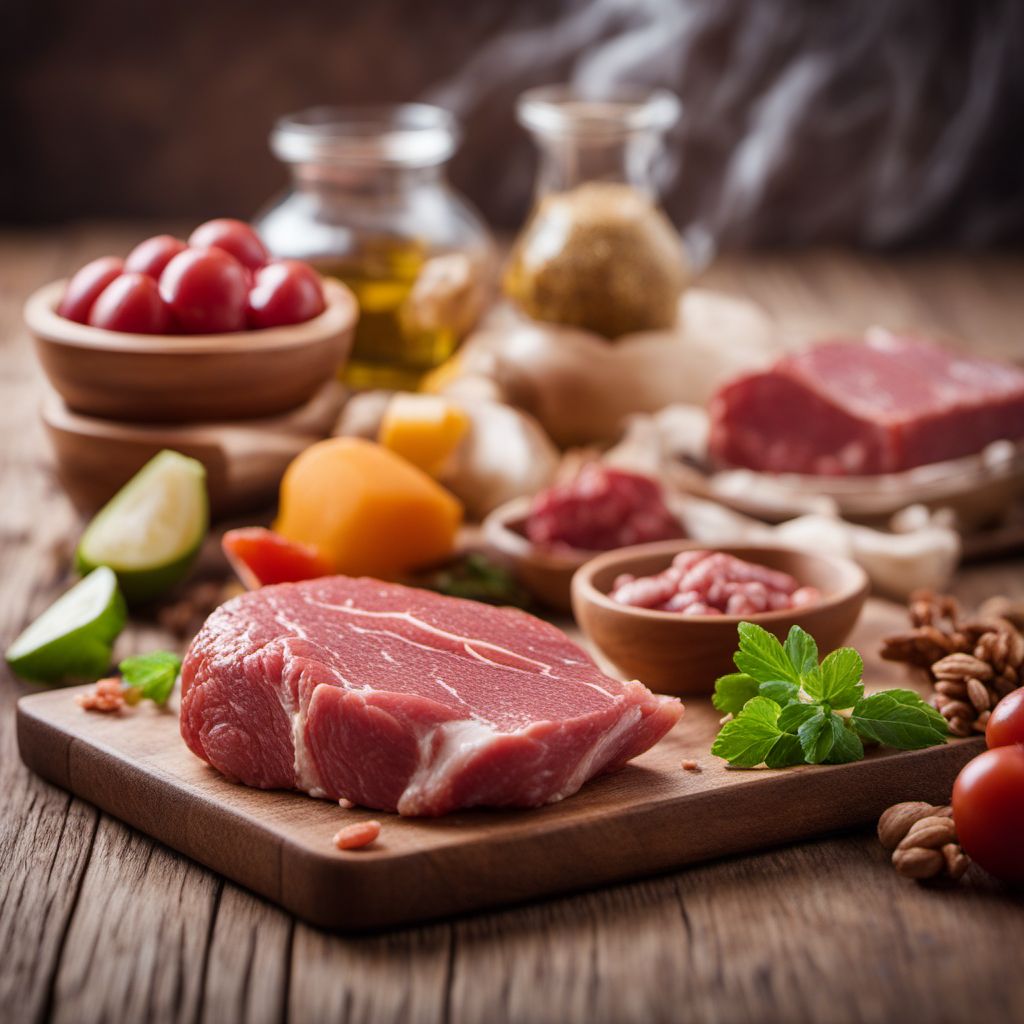
Ingredient
Mammals and birds meat
The Savory Delights of Animal Protein
Mammals and birds meat, such as beef, pork, chicken, and lamb, are prized for their tender texture, succulent flavors, and ability to enhance the taste of various cuisines. They can be grilled, roasted, stewed, or sautéed to create hearty and satisfying meals.
Origins and history
The consumption of mammals and birds meat dates back to ancient times, with evidence of early humans hunting and utilizing these animals for sustenance. Throughout history, different cultures have developed unique culinary traditions and cooking techniques to make the most of these protein-rich ingredients. Today, mammals and birds meat continue to be an integral part of global cuisine, representing cultural heritage and culinary diversity.
Nutritional information
Mammals and birds meat are excellent sources of high-quality protein, essential amino acids, vitamins, and minerals. They are particularly rich in iron, zinc, and vitamin B12, which are vital for maintaining healthy blood cells, supporting immune function, and promoting overall well-being.
Allergens
Some individuals may have allergies or sensitivities to specific types of mammals and birds meat, such as beef, pork, or poultry. It is important to be aware of any personal dietary restrictions or allergies before consuming these ingredients.
How to select
When selecting mammals and birds meat, look for cuts that are fresh, firm, and have a vibrant color. Avoid any meat that appears discolored, has a strong odor, or feels slimy to the touch. Additionally, choose cuts with a good marbling of fat for enhanced flavor and tenderness.
Storage recommendations
To maintain the freshness and quality of mammals and birds meat, store them in the refrigerator at temperatures below 40°F (4°C). It is best to keep them in airtight containers or sealed plastic bags to prevent cross-contamination and preserve their flavor. For longer storage, consider freezing the meat, ensuring it is properly wrapped to prevent freezer burn.
How to produce
While producing mammals and birds meat on a large scale requires specialized farming practices, individuals can raise small quantities of poultry, such as chickens or ducks, in their backyard with proper care and attention to ensure a sustainable source of fresh meat.
Preparation tips
Mammals and birds meat can be prepared in various ways, depending on the desired outcome. For grilling or roasting, marinating the meat beforehand can enhance its flavor and tenderness. When stewing or braising, slow cooking over low heat can result in tender and succulent dishes. It is important to follow proper cooking temperatures and times to ensure the meat is cooked thoroughly and safe to consume.
Culinary uses
Mammals and birds meat are widely used in culinary applications around the world. They are commonly featured in dishes such as steaks, burgers, stir-fries, curries, stews, and roasts. These ingredients provide the foundation for many traditional and contemporary recipes, showcasing their versatility and ability to elevate flavors.
Availability
Mammals and birds meat are available in most regions and countries worldwide. However, the specific types of meat and cuts may vary depending on cultural preferences and local farming practices.


